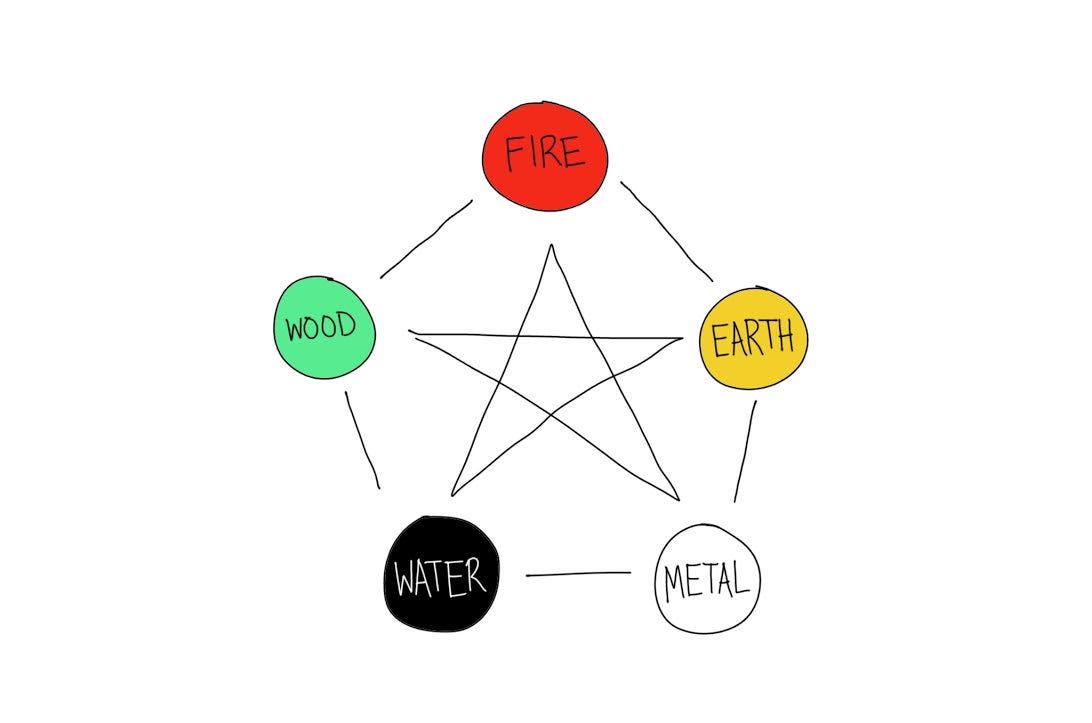

Over time, too much Yang will lead excess Yin as overactivity will create fatigue and lethargy. Excessive heat or acidity in the body will burn the body out. If a person is too Yang, overactive and overstimulated with work, exercise, sex and drugs such as caffeine, cocaine, or energy drinks, this can lead to excessive heat in the body. Yang relates to expansion and expression, brightness, warmth, masculinity and acidity. Yin relates to contraction and introversion, darkness, coldness, feminity and alkalinity. These principles of Yin and Yang are the basic building blocks that guide us to create balance in body and mind. These are the fundamental aspects of YIn and Yang that form the basis for understanding the forces influencing and shaping our selves and our lives. Yin and Yang are mutually consumptive forces as each will consume the other as it becomes over predominant. Yin and Yang are mutually creative as one energetic movement can transform into the other. Yin and Yang are interdependent and cannot exist without the support of each other. There are four basic principles of Yin and Yang. The more Yang, the more expressive and the more Yin, the more reserved. For example, a Yin personality type is more constricted or constrained and in its extreme state an introvert whereas a Yang personality type is very expressive and in its extreme negative state rather manic or belligerent. When using the terms Yin and Yang to describe personality types, these definitions do seem contrary. The Dan Tian, located below the navel, is the most powerful energetic force within the body that maintains optimal function and preserves the integrity of form. Prior to planetary matter were clouds of gas. Yang is the gaseous state, the Heaven. Yin is the state of particles creating matter, our Earth.Īs the Earth forms, matter collects together into a sphere with its gaseous state contained within its center. The magmatic core found within the Earth equates to the core energetic center that is called the “Dan Tian” or “Elixir Field” in the body of humans.

In this way, Yang initiates the formation of Yin. From the Chinese philosophical creation idea, first comes the force, the Qi, the Yang aspect creating a constrictive energetic field. As this constrictive field gathers, the condensation of gas creates the dust that densifies into matter. Yang is about action, Yin is about substance. Yin represents the substantial resources of life while Yang is the motivating force that works with these resources. This is how Yin and Yang are considered the fundamental principles of life and creation. From the one, formed the two and from the two creates the myriad of all things." Yin and Yang are symbolized by the black and white divisions within a circle, indicating the circle of life and the movement of energy from one basic form into another.Īs described in Chapter 1 of the Dao de Ching: "From nothing, came the one, the Ether that was the first Essence of life. The ideas of Yin and Yang and the Five Elements were established as theoretical principles in order to understand the cosmos and man’s relation to the cosmological forces found in nature. The first mention of Yin and Yang are found in the I Ching, a book of cosmology established by this school, dating back to 700 B.C. This school was also called the School of Yin and Yang.

These major theoretical concepts were, however, all established by the School of Naturalism that predated Daoism. This holds true for the theory of Five Elements as well.

The concept of Yin and Yang is often attributed to the philosophical traditions of Daosim. At the core of Chinese Philosophy and Chinese Medicine is the fundamental principle of Yin and Yang.


 0 kommentar(er)
0 kommentar(er)
